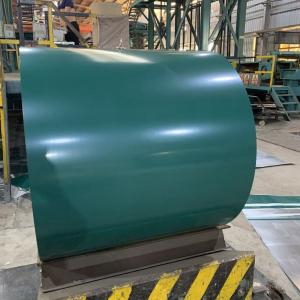Bending, slitting, and roll-forming are the core deep-processing
technologies for color-coated coils. Through these processes, coils
can be transformed into finished products suitable for different
scenarios. The detailed introduction is as follows:
Bending of color-coated coils is a process that uses a bending
machine to apply pressure to flat color-coated sheets, making them
form specific angles along the fold line. Its key characteristics
are as follows:
Processing can be carried out at room temperature. The minimum
bending radius is usually 1.5-2 times the thickness of the sheet
(e.g., the minimum bending radius of a 1mm-thick sheet is 1.5-2mm).
The bending angle can be adjusted as needed (0°-180°). After
processing, the coating adhesion must remain at Grade 5B (cross-cut
test) to avoid cracking and peeling.
It is mostly used to manufacture products requiring
three-dimensional structures, such as mechanical casings, equipment
guards, and building keels. For example, color-coated sheets with a
thickness of 0.8-1.5mm are bent at a 90° angle and welded into
distribution box casings, which balance protection and aesthetics.
No high-temperature heating is required; the process is simple and
efficient. It enables multi-batch, small-volume customization to
meet the shape requirements of different products.
Slitting is a process that uses a slitting machine to cut wide
color-coated coils into multiple narrow coils or sheets along the
length direction. Its main characteristics include:
The slitting width can be precisely controlled, with a minimum
width of up to 50mm and a length error of ≤±1mm. The cut edges need
to be deburred (burr height ≤0.1mm) to prevent scratches on the
coating.
It is suitable for scenarios requiring narrow-width materials, such
as the production of billboard frames (width 100-200mm) and PV
bracket connectors (width 80-150mm). The slit narrow strips can be
used directly or further processed.
It can efficiently cut large coils into specifications suitable for
downstream needs, improving material utilization and reducing
subsequent processing costs.
Roll-forming (also known as tile-forming) is a process that uses a
multi-pass roll-forming machine to continuously roll color-coated
coils into profiles with specific wave shapes or forms. Its core
characteristics are as follows:
It can be formed into various profiles such as trapezoidal tiles
(wave height 25-35mm), corrugated sheets (wave pitch 100-300mm),
and tongue-and-groove panels. After forming, the angle deviation of
the profile is ≤±1°, and the length can be customized as needed
(usually 6-12m).
It is mainly used for building roofs and walls, such as trapezoidal
tile roofs of factories (thickness 0.3-0.8mm) and corrugated
exterior wall panels of light steel villas (thickness 0.5-1.0mm).
The formed profiles are connected by lapping or standing seams,
providing excellent waterproofness and structural stability.
It enables automated continuous production with high efficiency
(the daily output of a single production line can reach
1000-3000㎡). The formed products have enhanced strength and can be
directly used for construction and installation, shortening the
project cycle.
These three processes together form the key transformation link of
color-coated coils from raw coils to finished products, enabling
them to flexibly adapt to the differentiated needs of construction,
industry, decoration, and other fields.


